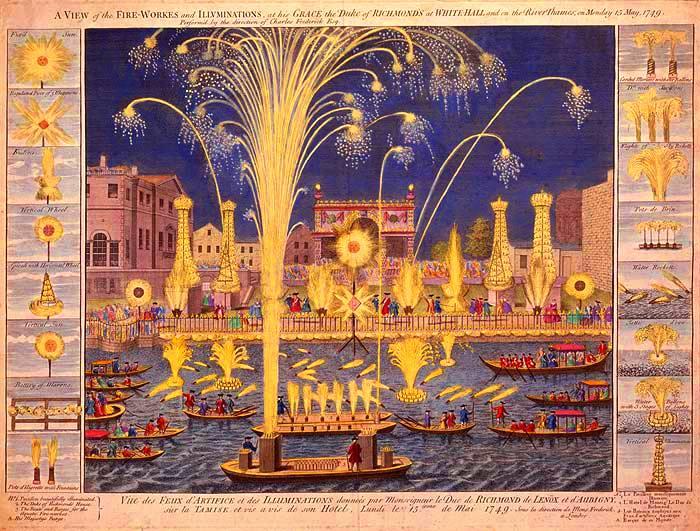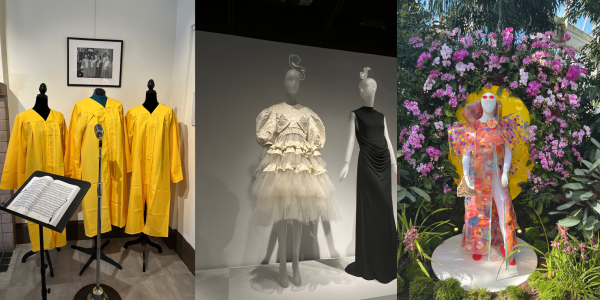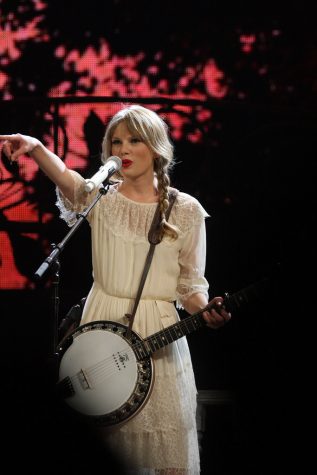The Maestro’s Corner: Music for the Royal Fireworks
March 26, 2015
The great composer George Frederick Handel was one of the most prolific composers of the Baroque period. He composed 16 organ concerti, 29 oratorios, (including the great Messiah), 42 operas, over 120 trios, duets, cantatas, and innumerable serenades, odes, and the like. Born in 1685 in Germany, as Georg Friederich Händel, his musical talent was discovered at an early age. He was soon given a place in the court of Prince George, a German royal. When Prince George ascended to the throne of England in 1714, Handel followed him to London, also changing the spelling of his own name. Handel’s many acclaimed operas and concert works soon earned him a favored place in the courts and manors of the English aristocracy, and he spent the remainder of his career in England, amassing vast wealth and respect from all who heard his music.
1749 marked the end of the War of Austrian Succession. The war began in 1740, when King Frederick II of Prussia invaded Silesia, thereby questioning Queen Maria Theresa’s right to rule Austria, Hungary, Bohemia and Croatia, even though her husband was the Holy Roman Emperor. Because she was a woman, many princes and kings were unwilling to admit her as the heir apparent. These rulers all produced obscure genealogical records to establish their claims to her throne. After many battles and small wars waged across a large expanse of territory, the war ended with the signing of the Treaty of Aix-la-Chapelle. The territories remained the same as they had at the start of the war, except that Silesia was granted to the Prussians. The War of Austrian Succession had been long, bloody, and expensive, leaving all the European nations relieved at its end. King George funded an extravagant celebratory fireworks display in London’s Green Park, and commissioned Handel to write a musical accompaniment. The result of this commission, a wind band suite later rescored for orchestra, has remained one of Handel’s most popular works.
Handel’s Music for the Royal Fireworks begins with a stately, royal overture, signaling the start of the show. Then, at 2:56, an exciting military-march emerges. The fireworks have begun in earnest. You can hear the firework cannons thundering in the timpani and the sky flaming overhead, with the fast notes of the brass and the sparkling harpsichord. Next, during the Bourrée (8:24), the sprightly woodwinds mimic a series of smaller fireworks. The next section, La Paix (9:55), is an observance of England’s newfound peace, with a ‘pastoral’ or ‘country’ atmosphere. The fourth section, La Réjouissance (13:42) is a fast-paced celebration; its polyphony (overlapping of melodies) makes it sound as if multiple fireworks are going off simultaneously. The last section (17:25) is composed of two minuets (dances), returning the suite to its original stately atmosphere.
Ten years after writing this suite, Handel died at the age of 74, leaving this and many more beautiful pieces for people to enjoy for centuries after. The Music for the Royal Fireworks is often performed alongside Handel’s Water Music, because both pieces are suitable for outdoor performance. Although it is often overshadowed by the celebrated Messiah, the Music for the Royal Fireworks powerfully captures the excitement of the new peace, and can be remembered as among the best written by the great composer.













